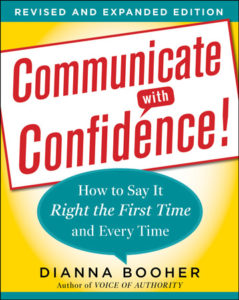


(Forbes originally published my article here.)
Yes, yes, I know most businesses are continually soliciting clients and prospects—not trying to turn them away. But it happens. Clients and prospects approach you about a need. But for many reasons, you may prefer not to take on their project.
After all, the client may be difficult, costing you time and aggravation to please them. You may have a conflict of interest—such as working for their competitor. You may not have the resources (funds, suppliers, or expertise) to handle the deal. Or you maybe could handle the project—but not comfortably and confidently that you’d complete the work to your typical high standards.
And most important, the job may not be profitable. Accepting that work may cause you to miss other, more important opportunities.
So whether you want to turn down work because the prospect’s a jerk or because it’s outside your sweet-spot of profitability, over the long haul, it pays to turn down business tactfully.
Here’s how you and your organization can walk away with the client relationship undamaged:
The only thing worse than telling a client or prospect “no” is telling them “no” too late—when they have limited or no other options. If they are waiting for you to come back to them with a proposal or a quote, don’t drag out the inevitable simply because you hate to disappoint.
As soon as you have considered the situation and decided not to accept the work, say so. Although putting off the unpleasant news is understandable, it’s never appreciated—or respected.
The one thing clients hate more than disappointing news is hearing it without an explanation. The following turn-down email is one I’ve seen far too often in my years as a consultant.
Ms Simpson,
After reviewing your RFP, we’ve decided not to offer a quote. Thank you for considering us for this work.
Sincerely,
A mysterious email like this sounds arbitrary, blunt, and cold. It’s far better to add a reason for your decision. Examples:
–“As you know from our past association, our organization takes on only projects that we can confidently complete within the client’s timeframe. With so many unknowns about the project scope, we can’t confidently commit to your deadline. Therefore, we’ve decided not to submit a quote.”
–“As you may know from the mutual acquaintance who referred us to you, we value our reputation for integrity above all else. In looking at our client list, we find several potential conflicts of interest. So on that basis, regrettably we cannot take on your project without violating the trust of other clients.”
–“Although we would love to complete this project for you, we find ourselves in peak season and unable to take on another project of this magnitude.”
Your explanation can be brief or expansive. But do attempt to let the client or prospect know your reasons rather than being secretive.
If you can think of an alternative to help the client or prospect, by all means, suggest it. Maybe you know a different solution to their problem. Or, you may be willing to refer another trusted supplier or colleague.
Clients and prospects often remember such an effort to help them through a tough situation and will likely return to you in the future for more suitable projects.
Whether writing or talking, never end on a negative note—what you can’t or won’t do. Instead, express your eagerness to hear from them about the next opportunity. Of course if that’s NOT the case, state that they’d be better served by contacting others better equipped to meet their future needs. And above all, thank them for the opportunity to consider the work.
Word-of-mouth still matters—even in a turndown. Impressions about how you’ve treated prospects or clients travel far beyond a single person or organization. A tactless response can leave a nasty taste in the buyer’s mouth.
Learn more about how to communicate with clients and prospects in Communicate With Confidence!: How to Say It Right the First Time and Every Time.
